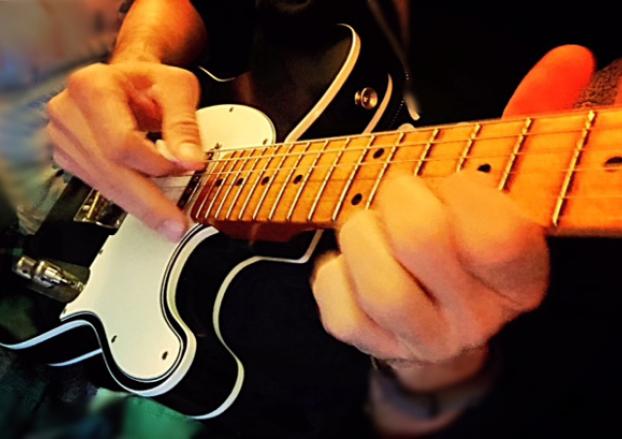A Simple Trick to Creating More Tasty Rhythms

I’ve never understood why one would skin a cat; I just know there’s more than one to do it. The same holds true for playing any chord on guitar. There are lots of ways to do it.
And—unlike skinning a cat—there’s a very good reason to vary how you play your chords: It adds dynamics to your tune without compromising the overarching melody. In other words, it makes the song you’re playing sound more interesting.
Let’s use the E major chord as an example. The standard position is open sixth string, fifth string second fret, fourth string second fret, third string first fret and open second and first strings. Here the focus is on the E note; you have three of them in different octaves in your chord. The notes from bottom up are E B E G# B E.
The next most common fingering for an E major chord would be a completely barred seventh fret, and the fourth, third and second string barred with your ring finger at the ninth fret. Here your notes from bottom up are B E B E G# B. Same chord? Yes, but the different note configuration—this time with three B notes instead of E notes—gives a slightly different sound.
Here’s another variation: Open sixth string, fifth string seventh fret, fourth string sixth fret, third string fourth fret, second string fifth fret, first string fourth fret. Now your notes are E E G# B E G#. Here we’re back to the emphasis on the E note with three E’s in the chord. But with G# as your highest note, it’s still going to be a different sound than your standard or barred E major chord.
Even if you use the exact same notes, like playing your E major chord by completely barring the 12 fret and playing your fifth and fourth strings on the 14th fret, and third string on the 13th, being up two octaves is going to add variety. Here your notes are identical to the first chord we examined, E B E G# B E. But try playing them back to back and you’ll hear the difference.
Don’t get stuck in the rut of playing the same chord the same way throughout a song. Every chord has several possible variations and each one has the potential to make your rhythm that much more interesting.
I used this technique of varying a chord’s note configuration to add dynamics to the bridge of the Stone Mob anthem “First Day.” I play a G – A chord progression in four different configurations, starting with the most standard position and ending two octaves higher and with an emphasis on different notes.
Watch the video for “First Day” and then the accompanying instructional video in which I’ll show you exactly what I did. You’ll learn some tasty ways to play G and A major chords, and get an idea how to add the technique of varying chord configurations into your own songs.
Cheers—and keep those fingers reconfiguring!
Get The Pick Newsletter
All the latest guitar news, interviews, lessons, reviews, deals and more, direct to your inbox!
“There are so many sounds to be discovered when you get away from using a pick”: Jared James Nichols shows you how to add “snap, crackle and pop” to your playing with banjo rolls and string snaps
Don't let chord inversions bamboozle you. It's simply the case of shuffling the notes around







![Joe Bonamassa [left] wears a deep blue suit and polka-dotted shirt and plays his green refin Strat; the late Irish blues legend Rory Gallagher [right] screams and inflicts some punishment on his heavily worn number one Stratocaster.](https://cdn.mos.cms.futurecdn.net/cw28h7UBcTVfTLs7p7eiLe.jpg)


